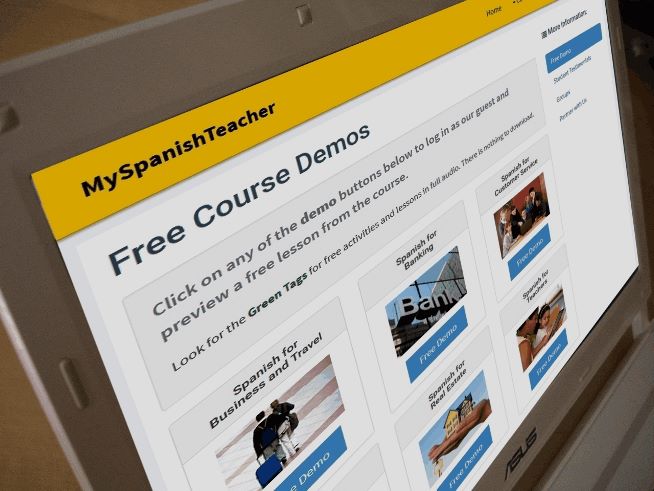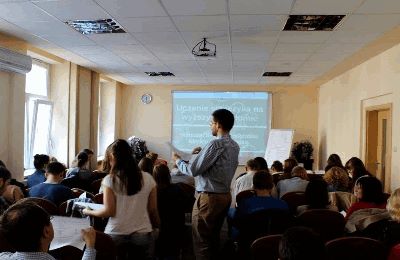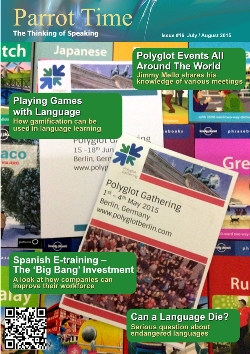Spanish E-training – The 'Big Bang' Investment

|
One out of every six Americans is Hispanic. Professionals in the workforce need to know how to interact positively with this rapidly growing population. Traditionally, law enforcement departments, hospitals, school districts and organizations have offered Spanish training to their employees in the form of a 2 to 5 day seminar, providing only 16 - 20 hours of classroom-style language training which has proven to be ineffective. No one can learn a new language in days. While the training might be top-notch and feedback might be great, if people can't apply what they learn on the job, then the training will not stick and will ultimately fail to produce long-lasting results.  The method organizations use today to train needs to be revisited, since ever tightening budgets are forcing organizations to flush many valuable programs 'down the commode.' Ten years ago e-training was a novelty, but today e-training is becoming the norm as organizations experience greater 'bang' for each buck invested. Learning online is a very effective method of studying Spanish. Online training gives the learner access to practice and repetition (the keys to success in learning a new language) anytime, 24/7. Instead of a one-shot seminar, the flexibility and lower costs of online learning are ideal to implement at any type of organization. Spanish e-training pays off big for organizations. First, the scheduling and implementing is less time-consuming than planning and running day seminars. Second, the training takes place in the convenience of the employee's space, eliminating travel expenses and other expenses associated with seminars. Third, online training can hold employees more accountable than a traditional seminar because attendance, assessment scores, activities, course completions, and participant progress can be monitored and immediately reported through learning management systems. Most important;y, online training allows organizations to provide a dependable, consistent and high quality training experience for every employee. When selecting a Spanish training program, organizations need to consider a few core components including the cost, program content, program restrictions and requirements. There are additional concerns to consider when evaluating an e-training program. These other considerations include the method of teaching, the availability of teachers for live support, and how the online platform engages the learner. In my 25 years of teaching Spanish, I have found the most effective method of studying and learning a new language is by using the spacing effect, also referred to as “drip approach” method. Imagine a dripping faucet, where each drop will collect to form a puddle that keeps expanding. Similarly, this method focuses on learning the language in small increments. Think of each word as a drop, phrases and sentences as small puddles which becomes a large pool of Spanish knowledge providing success with language learning.  I recommend MySpanishTeacher.com (MST) for using the drip approach plus concentrating on meeting the needs of the 3 different individual learning styles (visual, auditory and kinesthetic learner). MST also focuses on culture awareness to help the learner completely understand the conversation with a Spanish speaker. Spoken language is only 7% to 35% of communication. Even though we use words, it turns out we convey most of the meaning via non-verbal methods. Very few online Spanish programs stress the importance of cross cultural competence and non-verbal communication, but this program understands the importance of more than words. As you review different programs, ask questions that should address your concerns in implementing the appropriate Spanish program within your organization. Here are 10 sample questions you could ask when evaluating an online Spanish training program:
In my opinion, one last component the e-training must have to be successful are games and activities to make the learning experience fun and educational. When employees are engaged in their learning, they take greater ownership. Most of us agree that games are a great way to engage in learning and improve retention. It takes time to become confident in a language, games make the learning process fun, interactive and rewarding. Besides engaging, their knowledge increases, performance improves as well as their confidence to communicate in Spanish. It is estimated the Hispanic community will increase by 24 percent by 2050 in the United States. Employers including Spanish training in the annual training budget will with no doubt see top-line growth. Kendal Knetemann is a cross cultural communication consultant, a language blogger and Spanish instructor. You can read more about her at LingoHut where you'll find free language lessons, activities and articles on how to make language learning easier, or visit LingoHut's Facebook page. |
| Spanish E-training – The 'Big Bang' Investment | |||
| Writer: | Kendal Knetemann | ||
| Images: | |||
| |||
Jimmy Mello retains all copyright control over his images. They are used in Parrot Time with his expressed permission.
Maureen Millward retains all copyright control over her images. They are used in Parrot Time with her expressed permission.
All images are Copyright - CC BY-SA (Creative Commons Share Alike) by their respective owners, except for Petey, which is Public Domain (PD) or unless otherwise noted.
|
Searching for language resources? Find entertaining and educational books for learning a language at Scriveremo Publishing. Just click the link below to find learning books for more than 30 languages!
| |
comments powered by Disqus













































